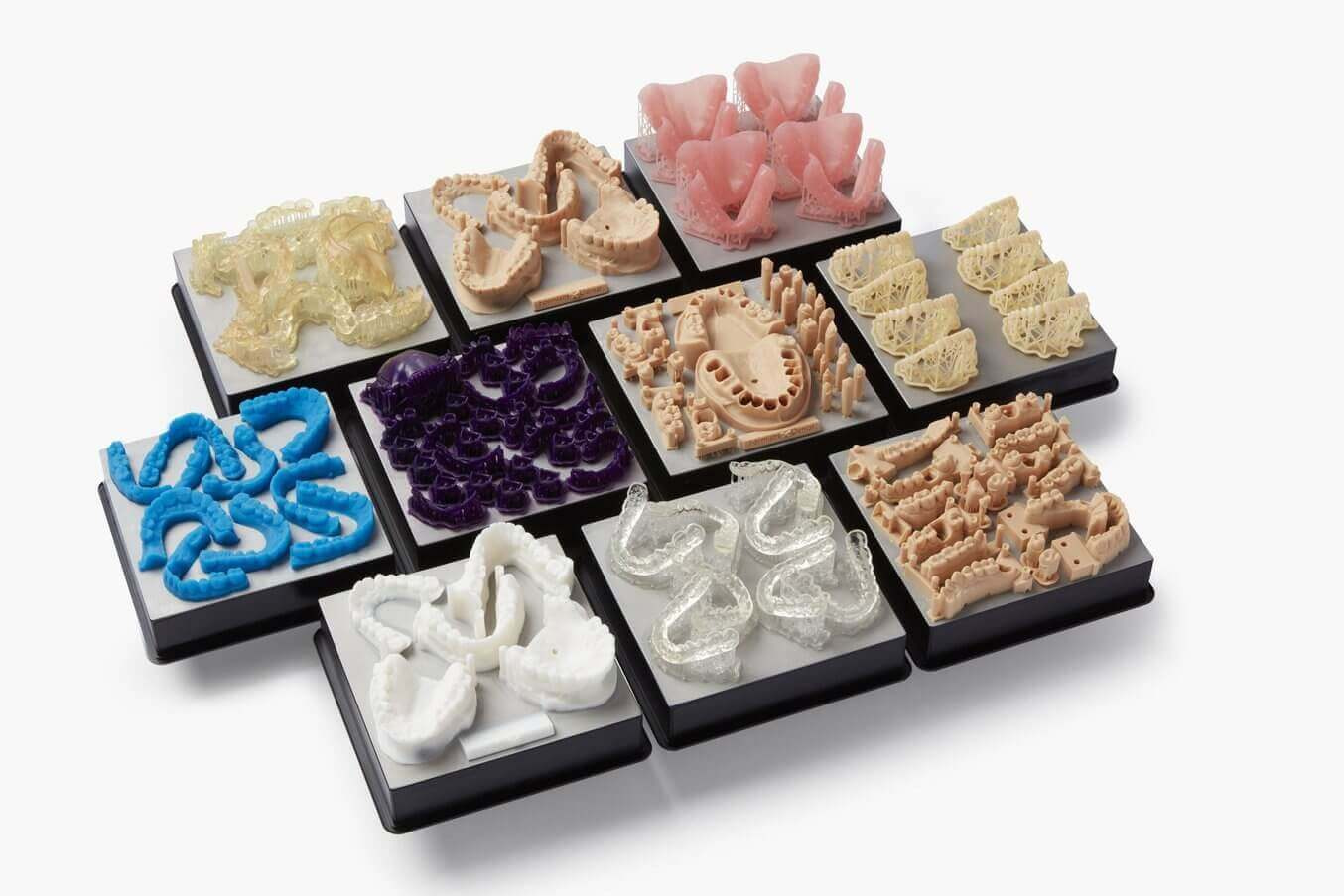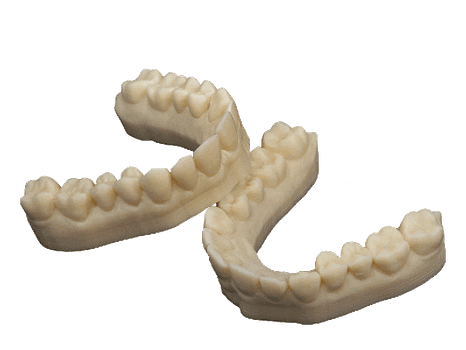The 3D printing market for dental industry is estimated to reach $9.5 billion by 2027. If we listen to the claims, it is certain that the impacts of additive manufacturing will be highly evident among dental applications. We have already witnessed the use of 3D printers for creating parts and functional prototypes for automotive, aerospace and healthcare industries. However, particularly in the dental industry, this concept of additive manufacturing is gaining popularity.
Unlike other niches, the dental industry is the most sophisticated one. Hence, in order to find the right solution for patients, one must focus on many aspects before involving 3D printing technology to the various dental applications. Not just the 3D printer, other hardware including print materials pose an important role in defining the final results. Therefore, it is crucial to understand the various components involved in making dental applications successful.
Dentists have the most unique requirements and are often non-negotiable when it comes to manufacturing different parts such as bridges, crowns etc. Hence, the materials for dental applications are not as common as the ones available for other industries. Usually, the dental 3D printing materials are specially designed resins. These have specific properties that make these materials suitable for complex dental applications and use in the oral cavity.
If we categorize the same, there are two different types of resins used for the dental niche, based on varying applications.
Resin for Dental Models: While it may seem like any other 3D printing material used for other applications, it's not. Simply because of the purpose of these models. These models must be aesthetically pleasing along with accurately designed. In short, dental models must have great balance between accuracy and speed.
Resins for Functional Models: Because these structures would be put inside the mouth of the patients, these shouldn’t be just accurate. Hence, functional models need FDA as Class Ia and IIa biocompatible certification. With so much development around 3D printing, it is easier to find these kinds of dental materials that are easy to 3D print and cost less.
Examples of Dental 3D Printing Materials
Here are a few examples of the dental 3D printing materials used for several applications within the niche.
KeyOrtho IBT for EnvisionTEC
This specific dental 3D printing material makes use of precision with strength to create brackets. The design helps in creating non-stick solutions or formulas that help in easy release. It is blessed with properties like tasteless, biocompatible and odorless to help manufacture indirect bonding trays without any hassle.
Along with being highly safe for applications in orthodontics, it also caters to a number of challenges previously found with conventional dental manufacturing methods. It is translucent that makes it simpler to fix it for precise positioning.
E-ORTHOSHAPE
One more 3D printing material by EnvisionTec, this 3D printing material possesses great qualities for dental applications. Feels more like grey ABS, the resin can print with 100 microns precision. The material with 65 MPa tensile strength and 108 MPa flexural strength is suitable for a number of models needed for producing clear aligners. Also, E-ORTHOSHAPE helps in mass production, making jobs faster and speedier.
VisiJet® M3 Stoneplast
If you are looking for producing translucent dental models, this material could be your best choice. The 3D printing material is biocompatible and can be printed directly from the digital file. It is suitable for manufacturing jaw models, drill guides, and many other applications.
This material is from 3DSystems and is one of the most popular one among the many choices the company offers.
NextDent Denture 3D+
This is another dental 3D printing material from 3DSystems. NextDent Denture 3D+ comes from the biocompatible Class IIa and is used for printing different kinds of removable denture bases. Along with having amazing mechanical properties, the results could be easily compared to those made from the conventional denture base materials. Moreover, the material comes in different colors. You can choose between Red Pink, Light Pink, Opaque Pink, Dark Pink, and Translucent Pink.
MED625FLX
Stratasys is a very reputable company when it comes to offering a complete ecosystem for 3D printing hardware and materials. From 3D printers to a variety of material, the company has always impressed users with its knack of getting things perfectly right. And, when it comes to dental 3D printing material, the same stays true.
The MED625FLX is a new biocompatible material, known for its flexible and transparent properties. It is suitable for manufacturing indirect bonding trays, implant gingival masks and temporary in-mouth placements.
Biocompatible VeroGlaze MED620
One more material for dental application by Stratasys, Biocompatible VeroGlaze MED620 is an opaque material that is rigid and suitable for many applications that involve a biocompatible dental material.
You can design diagnostic wax-ups, denture try-ins, and custom trays. With certification that allows this material for temporary placements of up to 24 hours, it serves as a huge aid to dental patients.
Other Hardware Involved in Dental 3D Printing Applications
Apart from 3D printing materials, there are a number of other devices and hardware used for manufacturing of aids and models for dental niche.
3D Printer – Without any guesses, this is the machine that helps in creating finished models, crowns and other devices using the 3D printing materials. There are a huge number of different 3D printers available for use in the dental office, ranging from $500 to $20,000.
3D and Intraoral Scanners – Digital Dentistry is not just about 3D Printers. But about other important devices and tools too. One such device is a 3D scanner or Intraoral scanner to fabricate a digital replica of a patient's mouth. You can read more about our scanner reviews here.
The Conclusion
Dental manufacturing applications need precision along with speed. 3D Printing is revolutionizing the dental industry and is having impacts on all aspects of dental care. From making study models and wax ups to printing surgical guides and restorations. 3D printing can be utilized in all aspects. Therefore, it is indispensable to make use of 3D printing materials and hardware for attaining better results and accuracy as we further progress in the digital age of dentistry.




